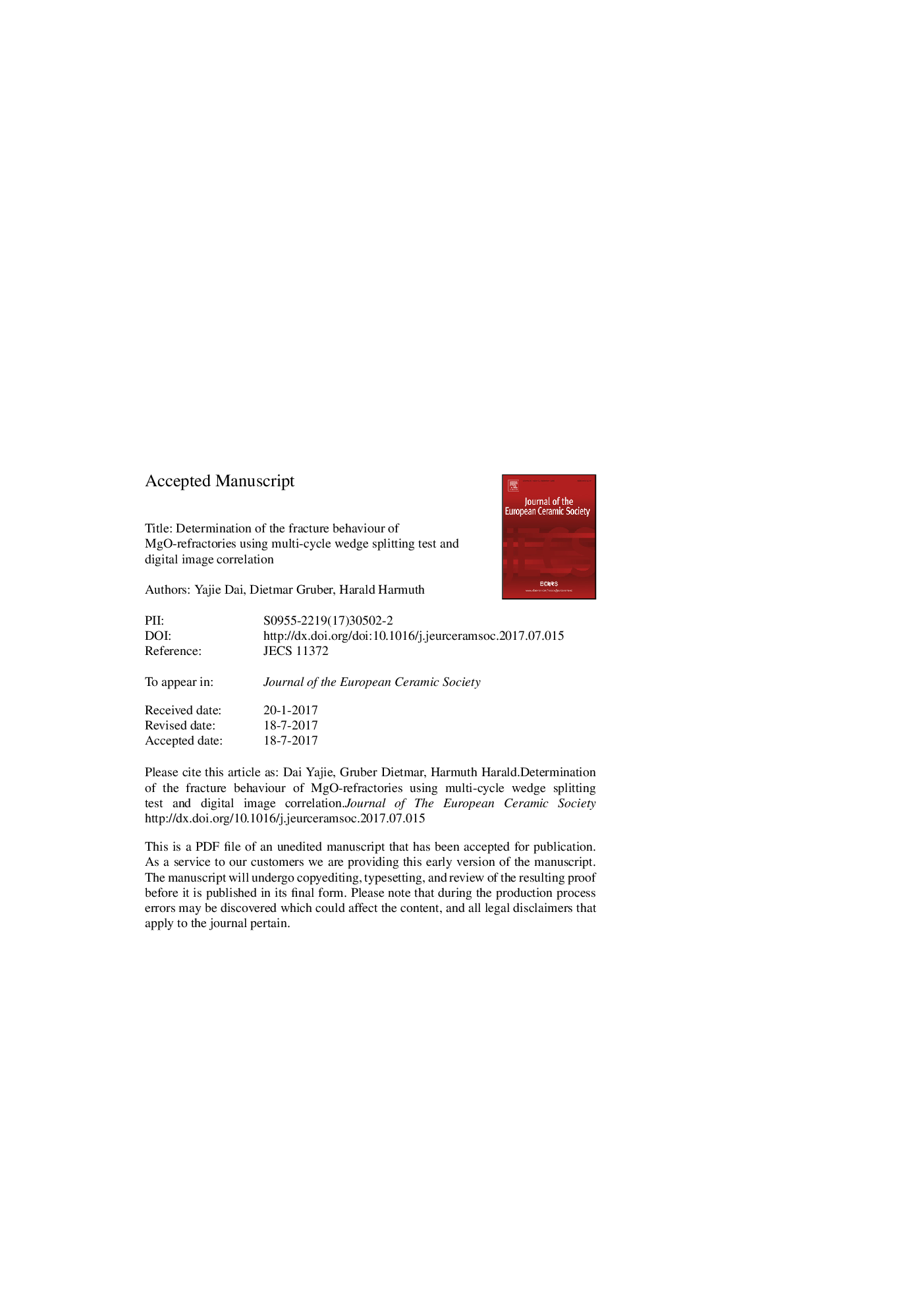| Article ID | Journal | Published Year | Pages | File Type |
|---|---|---|---|---|
| 5440368 | Journal of the European Ceramic Society | 2017 | 21 Pages |
Abstract
Refractories with reduced brittleness show a pronounced deviation from linear elastic behaviour and an enhanced thermal shock resistance. This paper aims to study the influence of microstructure on the fracture behaviour of magnesia refractories. The wedge splitting test(WST), which enables stable crack propagation for quasi-brittle materials, was used to identify the fracture behaviour and evaluate the energy dissipation. The evaluation of the crack lengths of the magnesia and magnesia spinel materials during the entire cyclic WST is based on the localized strain evaluated using the digital image correlation (DIC). A significant fracture process zone develops in the magnesia spinel material. The relationship between the dissipated energy and the actual crack length, which was used to characterize the crack growth resistance, was determined. The refractory materials that showed reduced brittleness consume a small amount of energy for fracture initiation but a large amount of energy for further crack propagation.
Related Topics
Physical Sciences and Engineering
Materials Science
Ceramics and Composites
Authors
Yajie Dai, Dietmar Gruber, Harald Harmuth,
